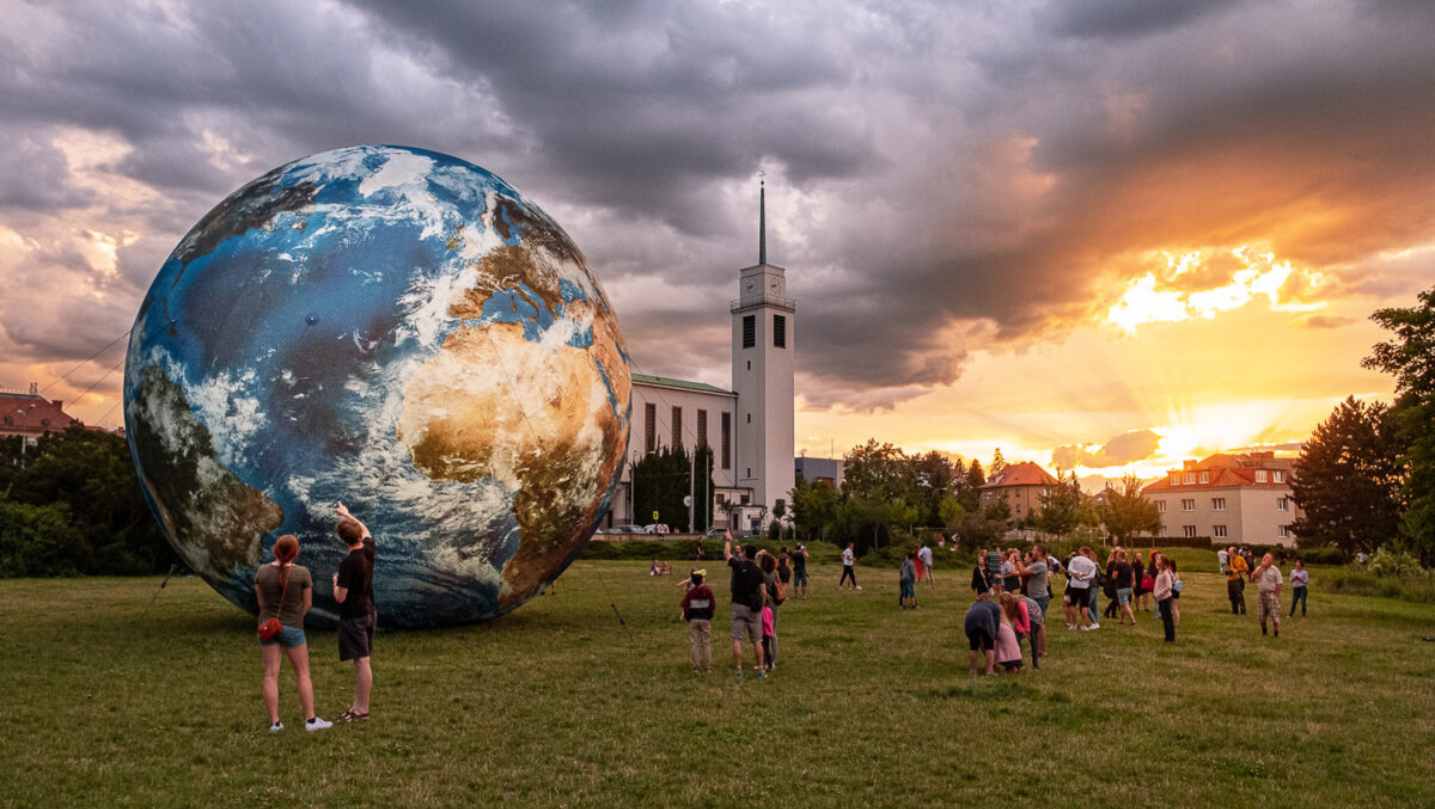Residents and visitors of Brno will soon have the chance to experience the ‘Festival of Planets‘ in Kraví hora park, next to the city planetarium.
From August 5 to 11, six giant, detailed inflatable celestial body models will be displayed. These include daytime and nighttime versions of Earth, the Sun, the Moon, Mars, and a new model called the Astrosphere, which features a map of the starry sky.
Admission to the festival is free. All the models are created using tens of thousands of real astronomical images, providing a realistic experience.
The exhibition will be open daily from 14:00 to 23:30. However, the best time to visit is at dusk when the celestial objects are beautifully illuminated.
Visitors can also enjoy various activities including educational lectures, screenings of fantastic films at the summer cinema, and other events. For a detailed schedule of events, you can visit the official festival website.
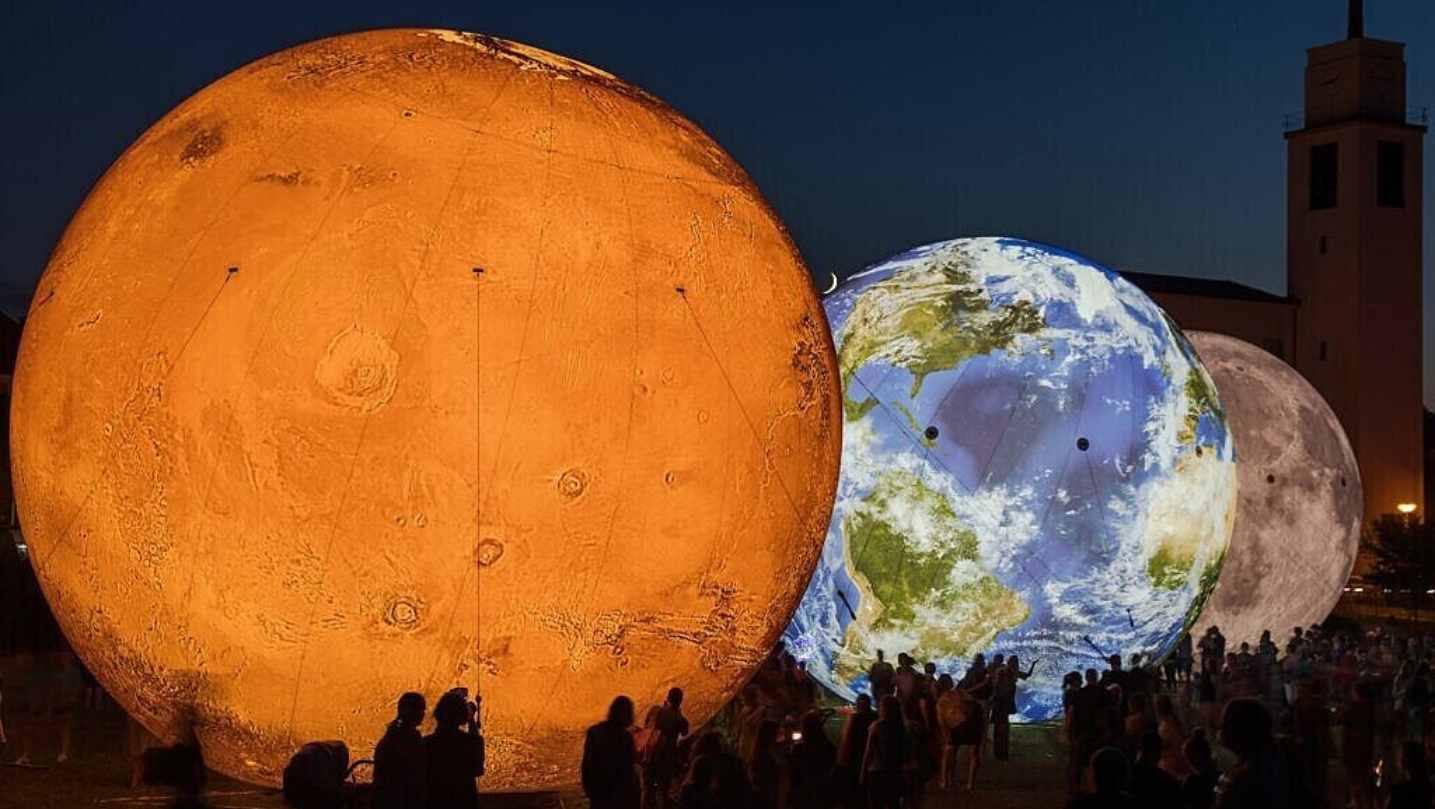
Highlights include the “With animals from space” show for children, “Until the end of the universe” and “Black holes”, which are suitable for all, and a special musical show based on Pink Floyd’s The Dark Side of the Moon.
The exhibition is subject to favorable weather conditions, as strong gusts of wind or heavy rain can endanger the models.
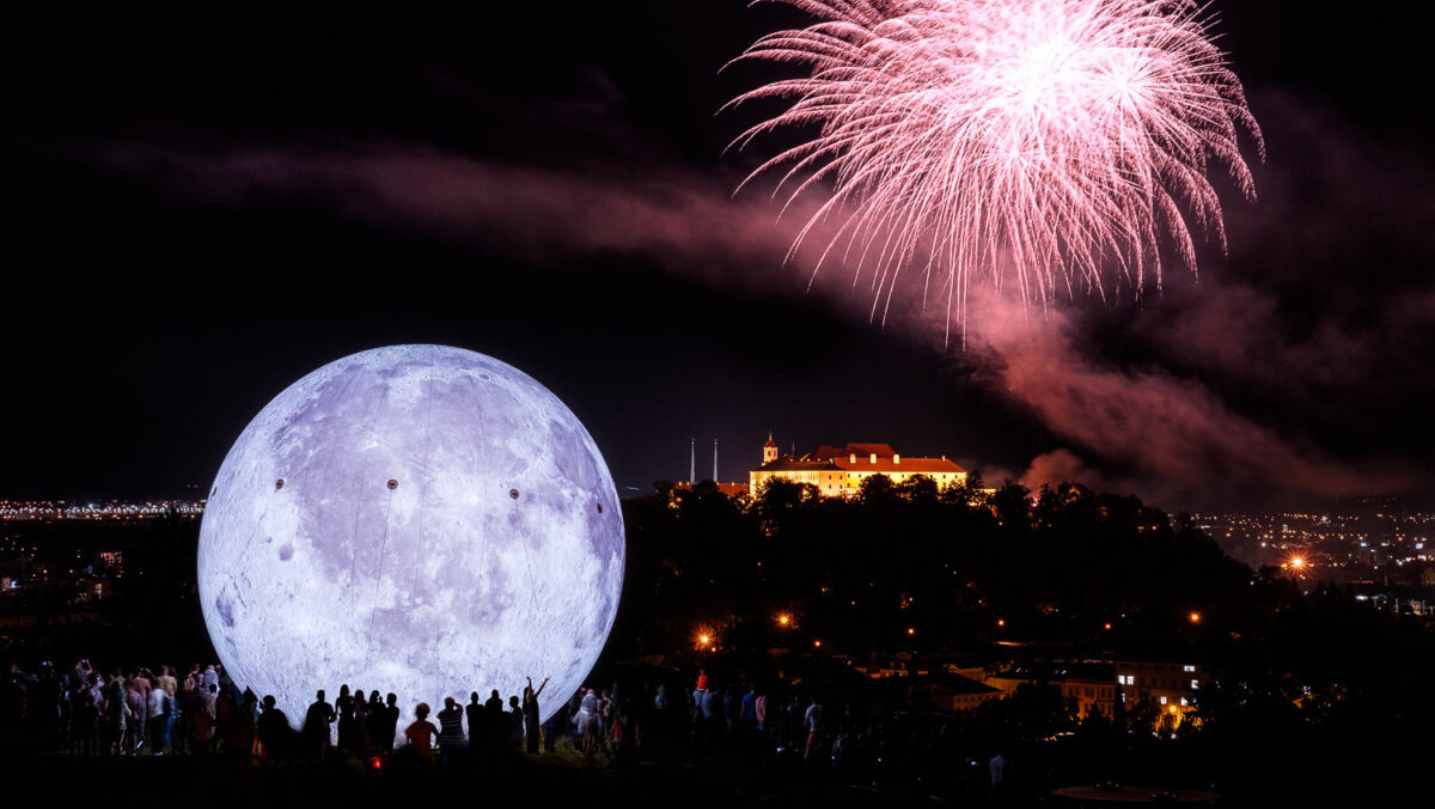
The festival is organized by the Brno Observatory and Planetarium and is being held for the second time, with the first event taking place from July 8 to 14.
Would you like us to write about your business? Find out more
In 2024, there is a growing push for education reforms to address the overuse of mobile phones.
Some countries have started banning phones in schools, but until now, the Czech Republic has not taken similar steps. This September, the eastern city of Vsetín will implement the country’s first-ever school phone ban.
Banning Phones in the Czech Republic
According to school regulations based on the UN’s Convention on the Rights of the Child from 1989, primary school students must keep their phones off or in silent mode during school hours to avoid disrupting lessons. They are also prohibited from making audiovisual recordings.
However, students are allowed to keep their phones with them without having to hand them in.
The new regulation agreed upon by the Vsetín district council changes this. “Starting from the new school year 2024/2025, pupils of Vsetín primary schools managed by the town will not be allowed to use or carry mobile phones during school hours,” the council announced.
This regulation will apply to five elementary schools in Vsetín directly managed by the city. These schools are:
Primary School Vsetín, Trávníky 1217
Primary School Vsetín, Sychrov 97
Primary School Vsetín, Rokytnice 436
Primary School Vsetín, Ohrada 1876
Primary School Vsetín, Luh 1544
Phones Switched Off and Locked in Boxes
Students will place their phones in special lockable boxes before school begins. The ban will take effect in all mentioned schools starting September 2024.
According to the Czech School Inspectorate, the ban is legally sound. Schools are responsible for students during school hours, and thus can restrict or prohibit phone use.
“School rules or internal regulations may restrict or prohibit the use of mobile phones or other electronic devices by children, pupils, or students, except to the extent necessary for health reasons,” states the 2020 amendment to the Education Act.
Would you like us to write about your business? Find out more
Máj Národní, the renovated shopping center in Prague’s city center, opened to publich on June 24 after reconstruction.
Each of its nine floors offers something unique, but the crown jewels are the 8th-floor Fly Vista rooftop restaurant and bar, and the 9th-floor panoramic terrace—40 meters above the ground—which boasts the highest observation deck in central Prague.
“The observation deck has significantly accelerated the entire project,” says Martin Klán, a board member of AMADEUS Real Estate, which has owned the former Máj department store since 2019.
“The view from the roof was a decisive factor in transforming the original concept. Everyone who has visited the terrace agrees it’s an unmatched experience in Prague.”
Not only does Fly Vista boast jaw-dropping views, but it also boasts the longest bar in Europe at 36 meters long.
Open for breakfast, lunch, dinner and drinks, Fly Vista serves a diverse and elevated food menu, prepared with an emphasis on quality and freshness.

The gourmet dishes are complemented by a great array of crafted cocktails, wine and premium spirits.
Just below, on the 8th floor, Fly Vista restaurant and bar features a Champagne Bar with over 100 types of champagne, one of Prague’s largest selections. Crystal chandeliers and a massive ice bucket, measuring 1.8 x 0.9 x 0.89 meters, add to the luxurious atmosphere.

Fly Vista offers the perfect setting for a quiet gathering with friends, a romantic dinner, or a special celebration in the heart of Prague.
Moreover, they offer an all-day breakfast that starts at 7:30 am every weekday and at 8:30 am at weekends.
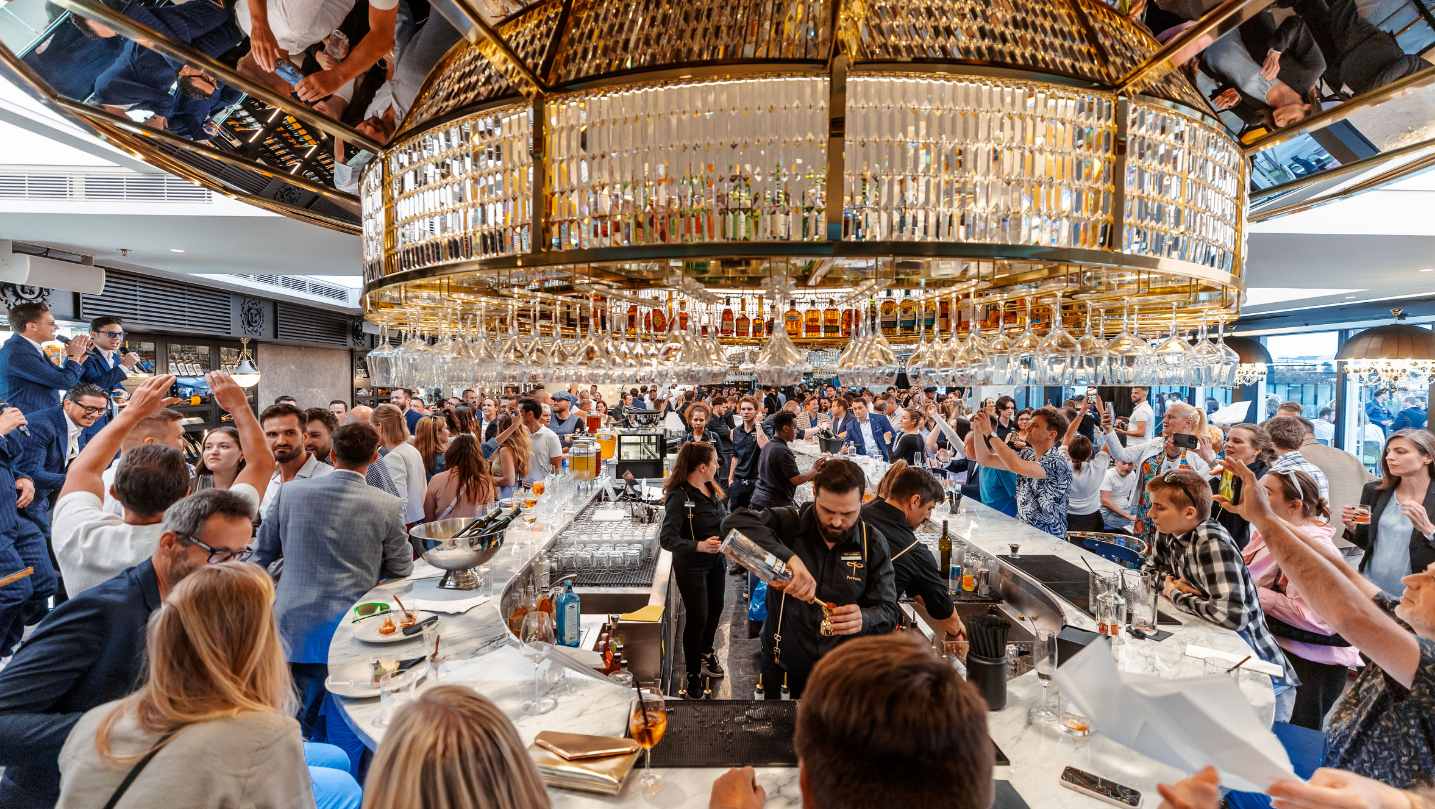
Would you like us to write about your business? Find out more
The Northern Lights could be visible in Czechia in the coming days due to a series of solar flares releasing plasma clouds heading toward Earth, according to astronomer Petr Horálek from the Institute of Physics in Opava.
This rare natural phenomenon was last observed in Czechia in May, when the aurora was the strongest since 2003.
The first wave of plasma clouds is expected to arrive today, although during the day. Horálek noted that geomagnetic activity could continue into the night. Additionally, more flares are occurring on the Sun.
“It is possible that increased geomagnetic activity will persist for the next few days,” Horálek said, though he warned that predicting these phenomena is challenging.
Horálek compared the situation to May, when a series of eruptions caused bright auroras globally, including in Czechia and Slovakia. This time, the eruptions are weaker.
“Scientists do not expect the current solar activity to produce the same intensity of phenomena, but there is still a chance of auroras. Moreover, in the coming days, the moon will recede from the night sky, creating favorable conditions,” he explained.
Plasma clouds from the Sun typically reach Earth in two to three days, making long-term forecasts impossible. For those interested in observing the aurora, Horálek recommends using auroral monitors such as www.solarham.com or www.spaceweatherlive.com, or the mobile app Aurora Alerts.
The Aurora Borealis is one of the most beautiful natural phenomena in the sky, commonly seen in polar regions. In Czechia, they are usually very faint, and inexperienced observers might mistake them for light pollution or reddish glows.
“It’s easy to check if it’s really the aurora borealis using a mobile phone. A photo will show the colors better than the naked eye. Sometimes, the photo will also reveal columns of color, confirming it’s the aurora,” said Jakub Rozehnal, director of Planetum, which runs Prague’s planetarium and observatories.
For the best observation experience, find a spot with an unobstructed view to the north, away from major towns to avoid light pollution.
Would you like us to write about your business? Find out more
On July 30, 1419, a Hussite procession headed by the priest Jan Želivský attacked the New Town Hall in Prague and threw the king’s representatives from the windows into the street in what came to be known as the First Defenestration of Prague.
Background
Jan Hus spoke out against the pope for selling indulgences in Bohemia to raise money, which did not sit well with King Wenceslaus IV of Bohemia, who had received a share from indulgence sales. Without the King’s support, Jan Hus was eventually excommunicated and fled to southern Bohemia, where he stayed in exile for two years.
When the Council of Constance assembled in 1415, Jan Hus was asked to be there and present his views. But upon arrival, the Czech reformer was arrested and, refusing to recant his views, was eventually burned at the stake for heresy. Unrest in Bohemia began soon after as Hussite preachers urged their congregations to take up arms against the Catholic rulers.
The First Defenestration of Prague
People shouted over each other to break down the gates. Jan Želivský kept encouraging the invaders, saying, “Do not be afraid, children of God!
Under the onslaught of the beams brought from the enemy building, the gates burst open and everyone rushed up the staircase of the New Town Hall. At the last moment, the councillors block the door of the meeting hall with a bench, but it is of no use to them.
This is how the Hussite Revolution began on 30 July 1419, according to Jan Bauer, who wrote the book The Revolutionary Events of Czech History. “In a short time, the conseilers and the purkmister Jan Podivínský were caught and thrown out of the windows on set spears and barrels. Those who survived the fall were brutally conquered on the spot,” Bauer describes the events of the time.
The historian Petr Čornej described the events in Prague’s New Town as a carefully prepared coup. “The fact that the victims were left with their valuables, which they had with them at the time, testifies to the preparedness and perfect direction of the coup,” Čornej wrote.
Not even a shadow of suspicion of bad intentions was allowed to cling to the violent deaths of the enemies of the Hussite interpretation of the word of divine law.
But what radicalized the Czech public enough to take up arms and stand under the banner of the chalice emblem four years after the burning of Jan Hus in Constance? “After all, four years is a long time and the initial bitterness and anger must have worn off to some extent,” Bauer writes in his book.
In Bohemia at that time, there was a de facto disintegration of royal power. King Wenceslas IV, already completely overcome by alcoholism, resigned himself to ruling the country and only by occasional tantrums did he show that he was still the monarch.
“The tired, disgusted king did not seem to notice what was happening in his country at that time. All he wanted was undisturbed peace and a permanent residence in his favourite castles and the forests that surrounded them,” wrote historian Jiří Spěváček.
The defenestration of the anti-Hussite constables in Prague’s New Town simply returned the whole of Prague to Hussite hands and gave the king to understand that the Hussites would not retreat. The subsequent early demise of Wenceslas IV was the final straw that pulled down the revolutionary avalanche.
The events of 1414 to 1419 and the fact that Hussite politicians made the accession of Sigismund of Luxembourg to the Czech throne conditional on respect for the principles of the immediate reasons for the outbreak of the Hussite revolution lay in the political and ecclesiastical-religious spheres.
After nearly a century, a new building now stands on Prague’s Vítězné náměstí.
Victoria Palace, with its multimillion-crown facade, was inaugurated on Vítězné náměstí in Prague 6.
It includes 92 luxury apartments and commercial spaces on the ground floor, marking the first new construction on the square in 87 years.
The project, designed by Jakub Cigler’s studio, cost about CZK 850 million and was in planning for over 15 years. The Kaprain Group acquired the project in 2016, partnering with Penta Real Estate.
“The site had been a neglected open space, an incomplete city block. Our design aims to enhance the urban environment,” said David Musil, Managing Director of Penta Real Estate. “We coordinated with Prague 6 Municipality and other partners to include commercial spaces and facilities along Vítězné náměstí. The ground floor of Victoria Palace will house new services and a café.”
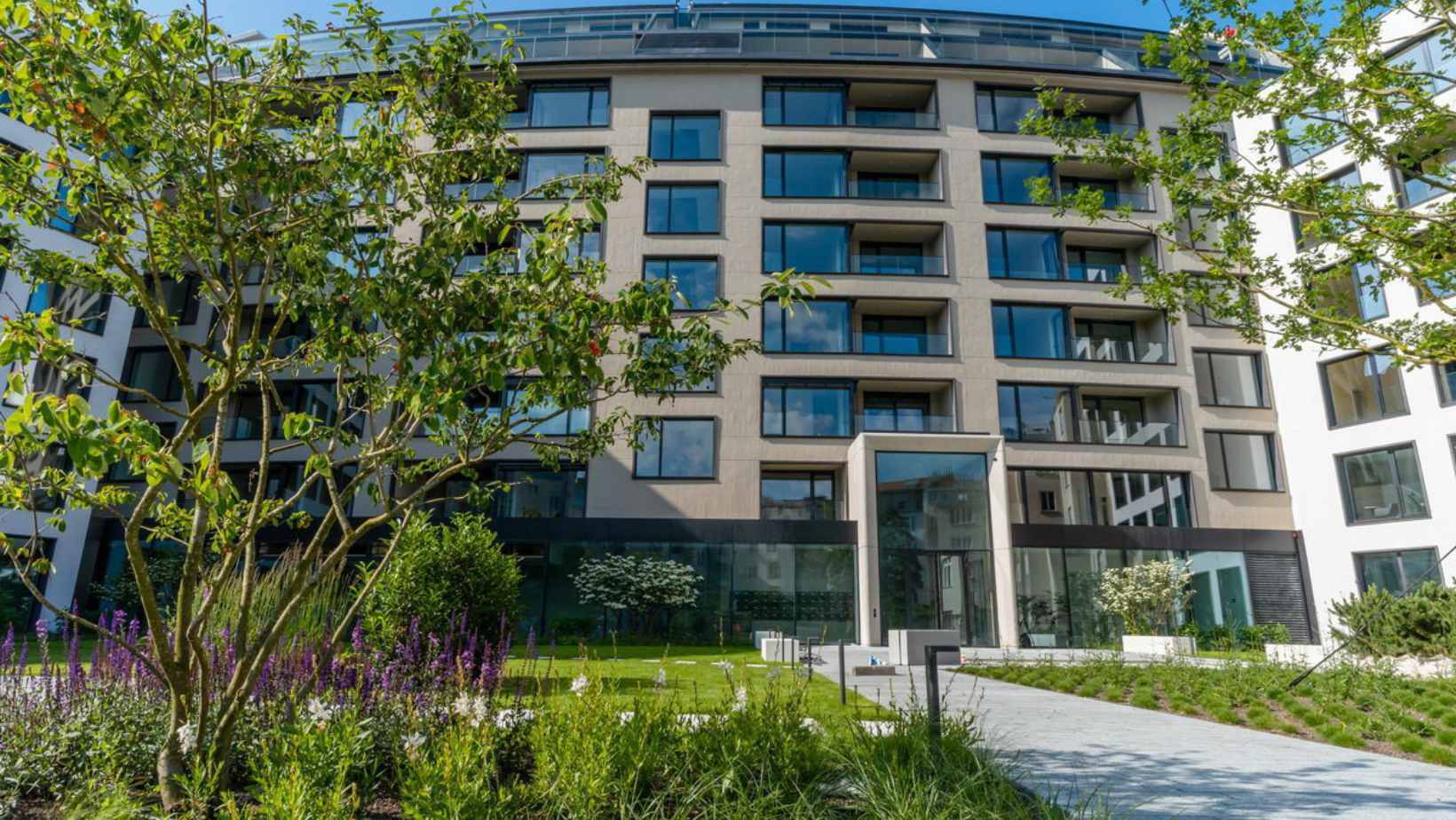
Jan Kozler, Development Director at Kaprain Group, highlighted the project’s unique blend of top architecture, luxury apartment design, and prime location. “The views of Vítězné náměstí, Hradčany, and Ořechovka have drawn significant interest, with 85% of the building already sold,” he noted.
Michal Kotrč, Senior Project Manager at Penta Real Estate, detailed the building’s key features: “The aluminium and glass-cement facade slats, the two-storey reception lobby clad in Italian travertine, and the garden with a water feature and a 25-year-old tree imported from the Netherlands are standout elements.”
Victoria Palace is part of a broader development on Vítězné náměstí, with Kaprain and Penta collaborating with the Sekyra Group on the neighboring Fourth Quadrant.
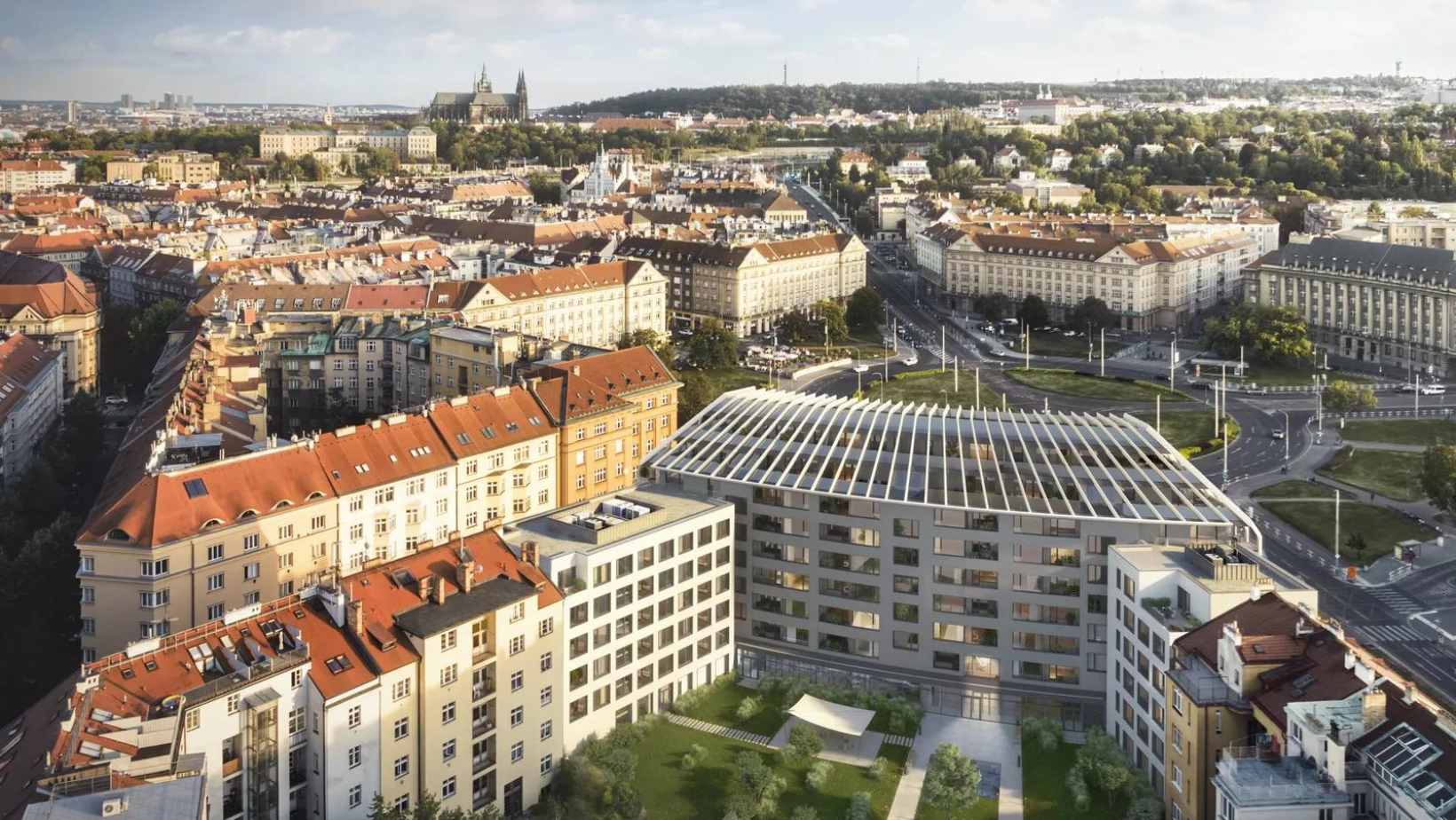
Victoria Palace also boasts an above-standard number of parking spaces on two underground floors, including electric charging stations.
Contributions from several Czech companies and designers, such as Preciosa with its unique Raw Crystal lighting in the entrance hall, add to the building’s prestige.
Would you like us to write about your business? Find out more
Tourists from Asia are starting to return to the Czech Republic, although their numbers are still noticeably lower than before the pandemic.
Chinese travelers, who were once the fifth most numerous visitors to the country, have not yet returned in the same numbers. Before the 2019 pandemic, around 1.7 million tourists came from Asia annually; last year, the figure was just under 800,000.
The direct air link between China and Prague, which had been out of service for four years, has now been restored and operates three times a week.
“We believe that the resumption of direct flights will attract Chinese tourists to the Czech Republic and that visitor numbers will soon return to pre-2019 levels,” said Chinese Ambassador Feng Piao.
In the first quarter of this year alone, nearly 22,000 tourists arrived from China, and the CzechTourism agency expects this number to increase tenfold by the end of the year. According to the agency’s director, František Reismüller, the Czech Republic could see a full recovery to pre-pandemic levels by 2025 or 2026.
Most Asian tourists spend only a few days in the Czech Republic, typically three, before traveling to other European destinations.
Asian Tourists Replaced by Other Visitors
In the Czech Republic, Asian tourists primarily visit cultural landmarks such as Prague, Český Krumlov, and Kutná Hora. Kristýna Drahotová, head of monuments operations at the Kutná Hora archdeaconry, noted a significant decrease in Asian tourist groups. However, visitors from neighboring European countries have compensated for the decline.
The castle in Český Krumlov remains popular among South Koreans, who frequently book paid tours. Guide Hana Hajerová mentioned that South Korean tourists typically spend half a day in the town, taking a city tour before heading to their hotel.
According to Český Krumlov’s deputy mayor Dalibor Uhlíř, the town is pleasantly crowded but not overcrowded. Chinese tourists have been largely replaced by Germans and Austrians. Despite the steady flow of visitors, local business sales are lower this year compared to last year.
Would you like us to write about your business? Find out more
On Sunday, August 11, the Czech Republic will host the ‘Day of Jewish Sites’ (Den židovských památek 2024).
During this event, both residents and visitors can access about 45 historical Jewish sites for free, many of which are typically closed to the public.
A complete list of participating sites, along with their opening hours, is available on the campaign’s website. Most locations will welcome visitors from 10:00 AM to 5:00 PM.
Several sites will offer additional programs for visitors, including guided tours, storytelling for children, and other activities.
To make it easier for visitors to navigate, the organizers have developed a mobile application that provides detailed information about each site.
The Jerusalem Synagogue (Jeruzalémská synagoga), the largest synagogue in Prague, will also be part of the event.
There is a smartphone app and an interactive map to help visitors. Click on the star to find the site — there is historical and other information, but it’s in Czech, so you will have to use Google Translate.
Since the fall of communism, around 70 synagogues have been restored, most of them for cultural use — so the Day of Jewish Monuments only takes in a fraction of restored Jewish heritage sites in the country. Many others are well-maintained and can also be visited.
The Day of Jewish Monuments initiative is organized by the Jewish community in Prague in collaboration with Matana, the administrative body for Jewish buildings and cemeteries and the Federation of Jewish Communities in Czechia.
Would you like us to write about your business? Find out more
Stromovka is one of the largest and most popular parks in Prague, drawing visitors with its beautiful nature, rich history, and numerous activities.
Let’s explore what Stromovka offers and how to get there.
Why Visit Stromovka?
Looking for a break from the city’s hustle and bustle or the perfect spot for a picnic with friends? Stromovka is your ideal choice. This vast park features green meadows, shady alleys, and ample opportunities for sports and cultural events.
What is Stromovka?
Stromovka, officially known as Královská obora, spans more than 95 hectares, making it one of Prague’s largest green spaces. Located in Prague 7, the park is a favorite among joggers, cyclists, families, and anyone looking to escape into nature without leaving the city. It’s perfect for walks, picnics, sports, or simply relaxing on the grass.
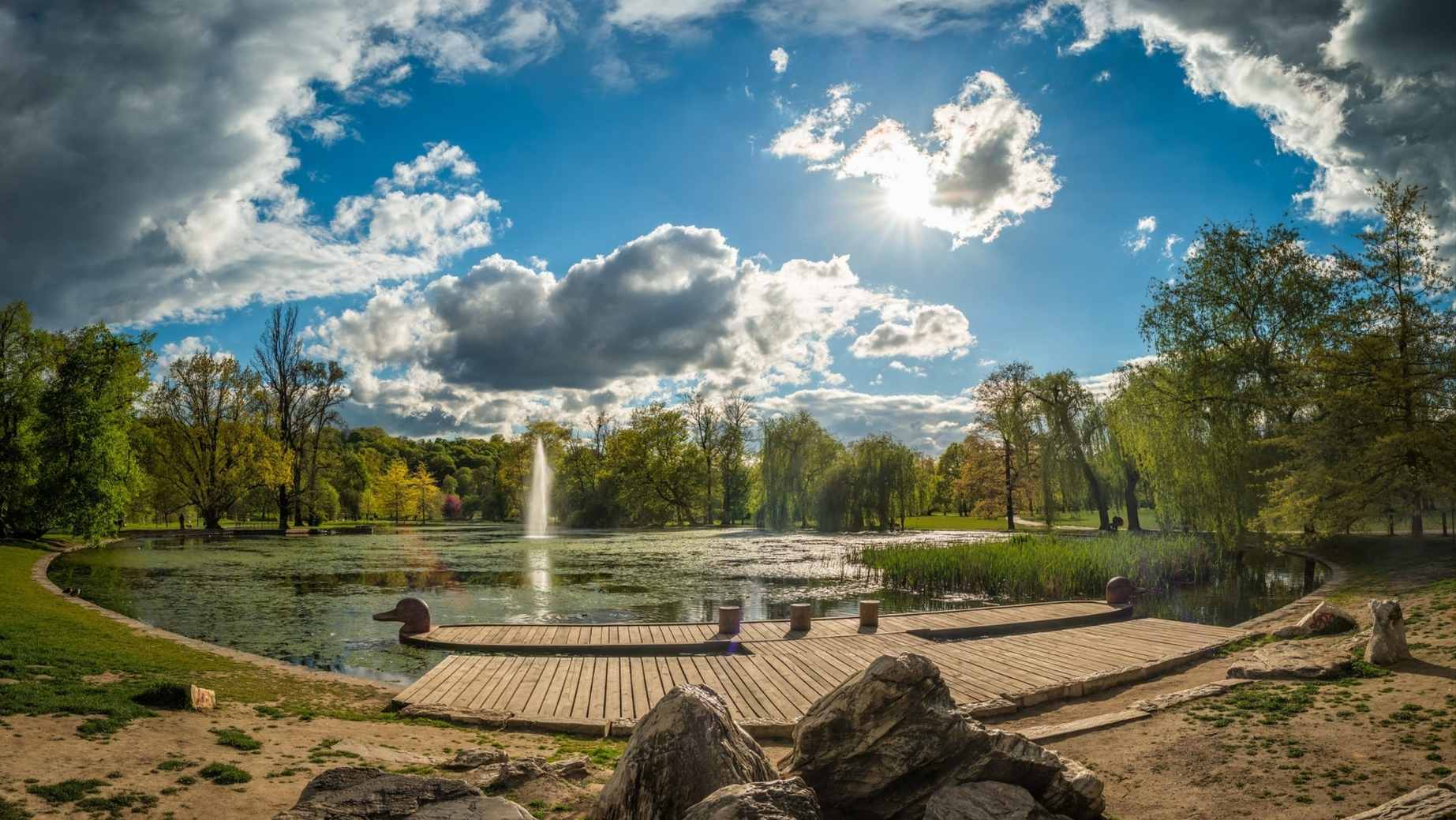
A Brief History
Stromovka’s history dates back to the 13th century when it was established as a royal hunting ground. Over time, it evolved and expanded, becoming a public park in the 19th century. The park is home to the original Vltava Creek and several ponds, which host various water birds. Throughout its history, Stromovka has undergone many changes, shaping it into the popular relaxation spot it is today.
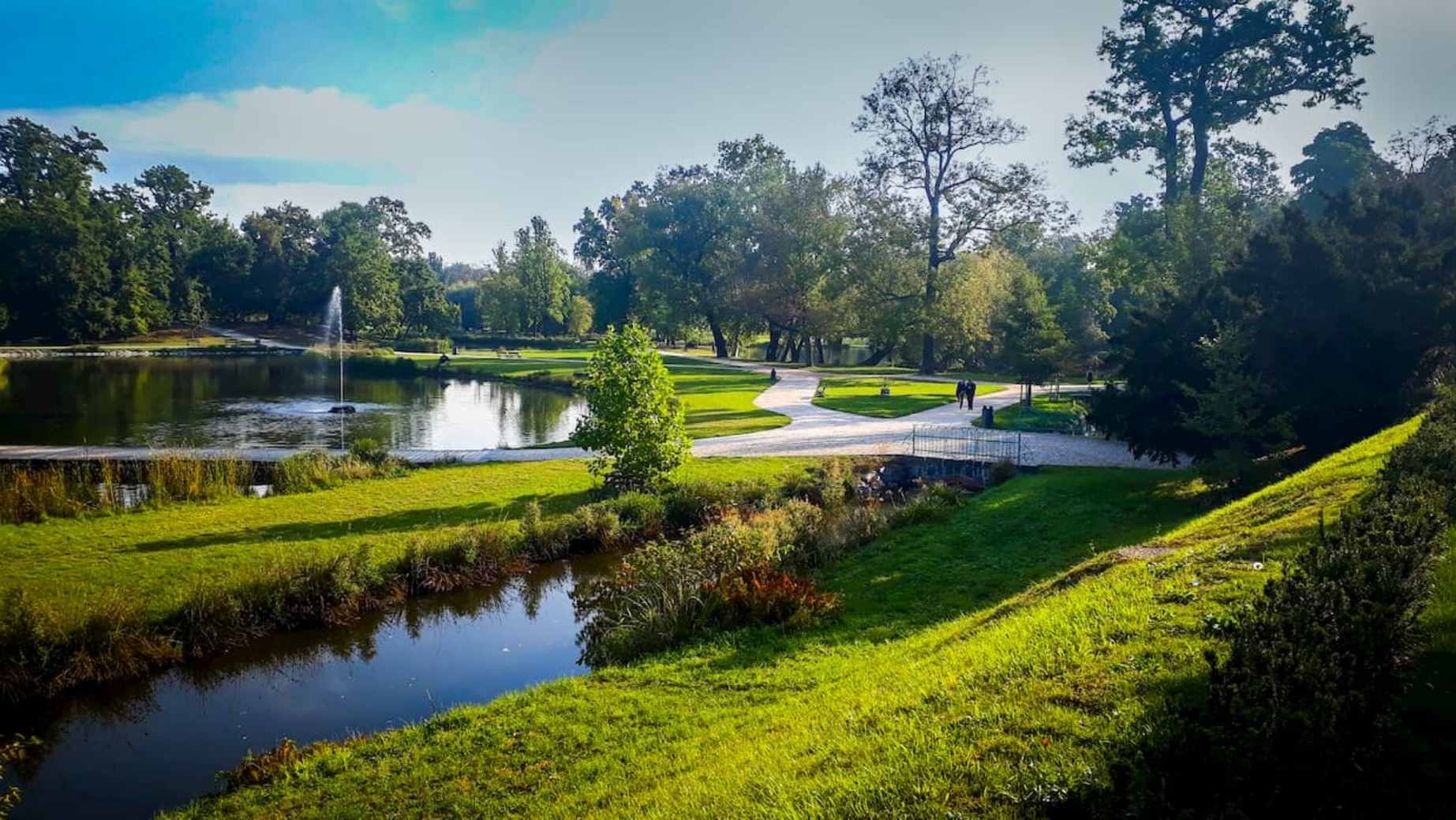
Activities in Stromovka
Stromovka offers a wide range of activities for all ages. Here are some ideas:
- Walking and Running: Enjoy the scenic trails.
- Cycling: Explore the park on two wheels.
- Picnics: Large meadows and shady spots are perfect for a picnic.
- Sports: Play football, volleyball, and other sports.
- Cultural Events: Attend various events hosted in the park.
How to Get to Stromovka
By Metro: The nearest metro station is Nádraží Holešovice (line C). From there, it’s just a few minutes’ walk to Stromovka.
By Tram: Trams also reach the park. The nearest stops are Výstaviště Holešovice (lines 6, 12, 17) and Planetarium Prague (line 6).
By Bike: Cycling enthusiasts can easily access Stromovka by bike. Bike-sharing stations like Rekola and Nextbike are available around the park, allowing you to ride directly into this natural haven.
Would you like us to write about your business? Find out more
Do you like cider? Taste more than 100 varieties at the Cider Festival on the weekend of September 20-22.
If you have only tasted “supermarket ciders” and remember them as alcoholic “soft drinks” full of chemicals, you’ll be pleasantly surprised.
The seventh edition of the main festival of fermented beverages of the year takes place at the Cross Club in Holešovice, near the city centre. In addition to craft ciders, ciders, and lemonades by small and local manufacturers from all over the country and abroad.
You can also look forward to good food and a fun accompanying program for the whole family.
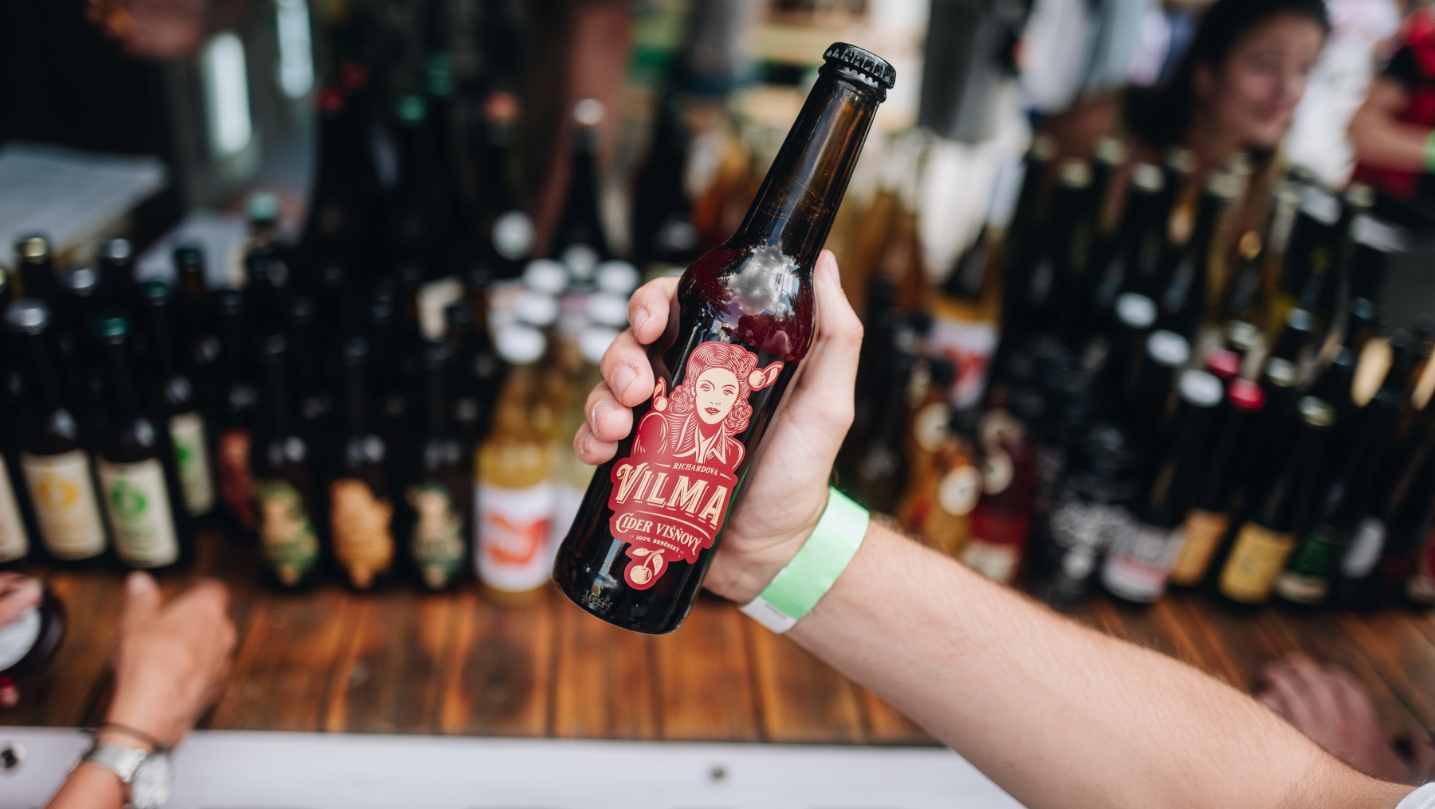
The idea behind organizing this event is to bring together and support dedicated cider producers who often don’t make it beyond their own region and present their beverages to the broader public.
A rich accompanying program
The event is not only about drinking, but also about entertainment. In addition to quality drinks, you can look forward to great food, musical performances, DJs, workshops and activities for children. They can have fun at creative workshops, like painting on bottles or getting their face painted, while you enjoy your favorite cider.
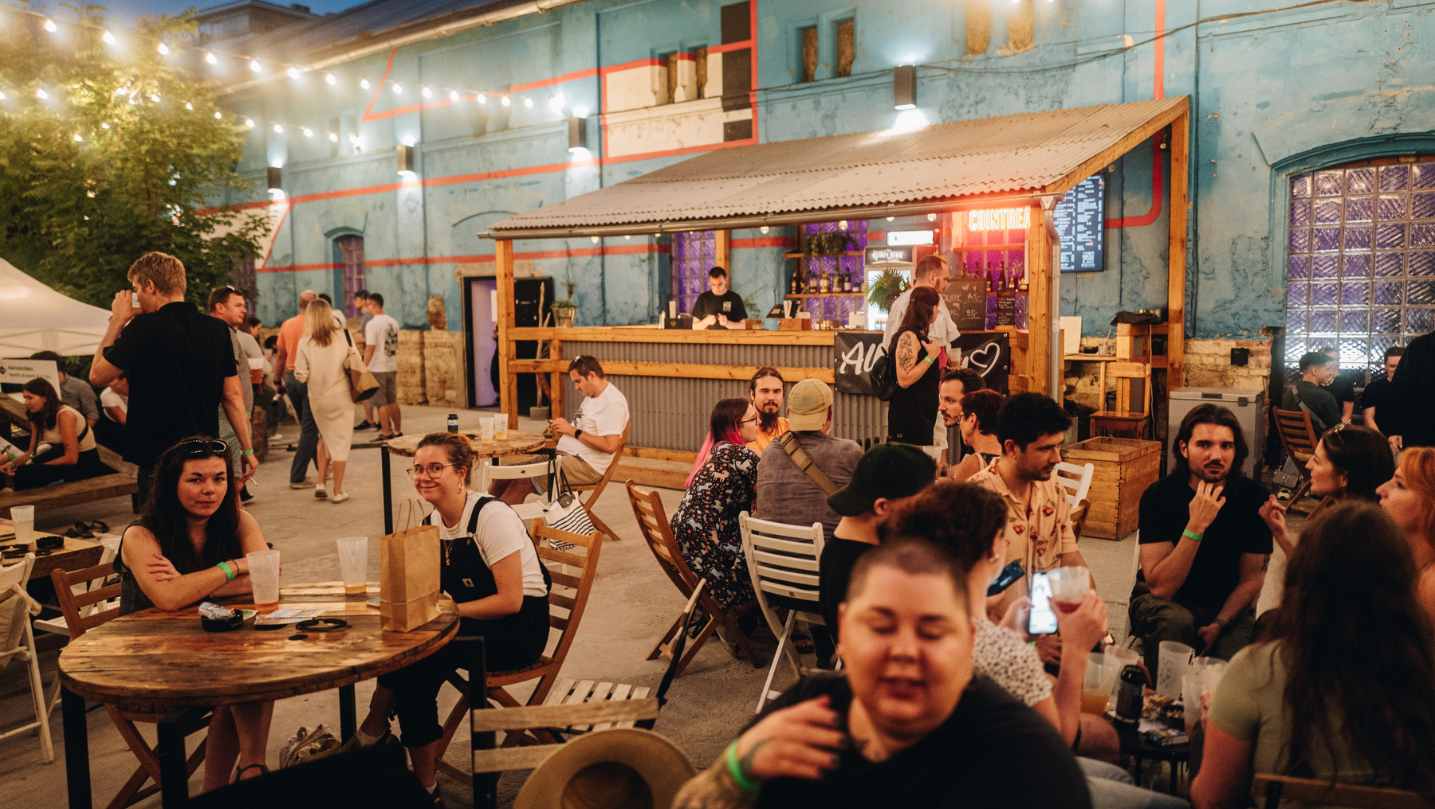
Practical information
The Cider Festival takes place outside the Cross Club in Holešovice, just 3 minutes from the Nádraží Holešovice metro station on line C. The event runs from Friday to Sunday from 12 am to 10 pm.
Discounted advance ticket sales here
The first wave of discounted tickets is already sold out. In the second wave, tickets cost CZK 150. Get your presale tickets via the GoOut network. Price at the door: 200 CZK
Tickets are valid for all three days and include a festival glass to take away as a souvenir.
Would you like us to write about your business? Find out more
The Slivovitz Brand is world-renowned for its delicious fruit brandy.
If you go to U Lužického semináře 116 near Malostranská tram station you can’t miss the Slivovitz Museum R. JELÍNEK with its interactive exhibition, a tasting bar with a modern atmosphere, and company shop.
The Slivovitz Museum and the old building have a rich history, including the Czech famous actor Slavka Budinova.
She died in 2002 and then in 2011 the RUDOLF JELÍNEK company bought the actual building, which was her original home, and they began renovations in 2017.
The museum and restaurant finished in 2019 but the COVID pandemic affected its operation for the following two years.
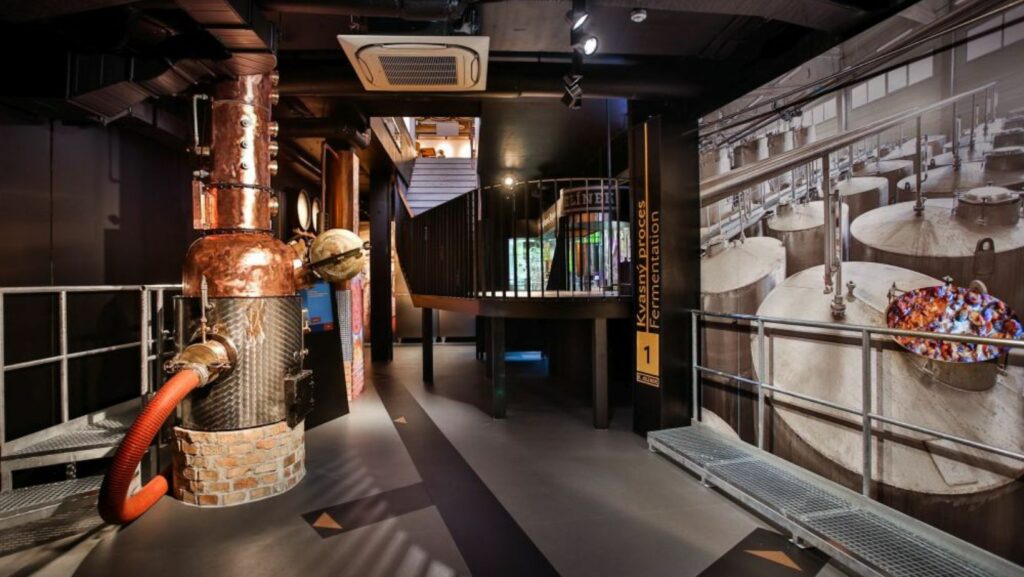
The tour includes first the deep history of the Jelinek family, then a movie about the orchards where the fruit grows, third the 5D presentation and finally seeing a replica of a Slivovitz the R. JELÍNEK distillery.
Do you know how many plums we need to make one bottle of 0,7 l Slivovitz 45% or what the angel tax is? All of these answers, you can find inside the museum.
One of the most popular parts of the exhibition is the 5D movie. This 5D experience takes you through the making of brandy: you start as a plum being harvested and go through the whole process.
As said by the manager of this museum it is a very “modern exhibition and full of audio and visual aspects” that transport you into a different mindset. I don’t want to spoil anything for you, but it is worth seeing.
At the end of the tour, you also get a tasting of three different brandies including plum brandy (slivovitz), Bohemian Honey brandy, and pear brandy. You can also choose a non-alcoholic tasting where you will be served homemade plum lemonade.
Thanks to the typical Wallachian cuisine and interesting interior design they created a not-so-typical bar and restaurant. You definitely have to try delicious plum dumplings!
In terms of gifts for this holiday season, you can print your label out and put it on a bottle of brandy to use as a gift or just for yourself. They also have small presents such as a package with three small bottles of each tasting brandy that you can gift to someone.
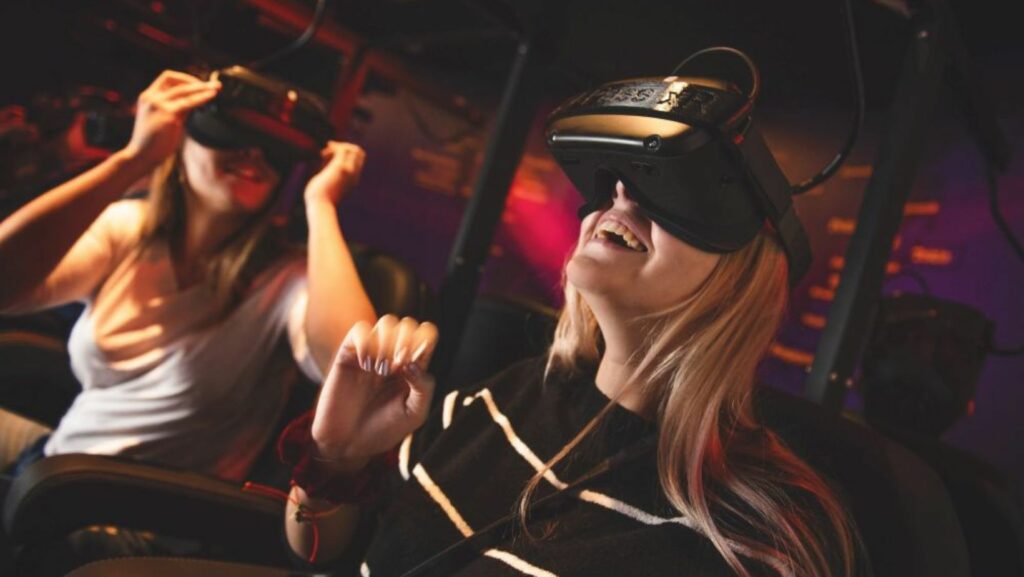
The Slivovitz Museum R. JELÍNEK is worth visiting if you want an exclusive experience with the sweet scent of the slivovitz and an all-natural product with a rich history and delicious taste.
Their products are world-renowned and celebrate the culture of the Czech Republic in a mouth-watering manner.
Would you like us to write about your business? Find out more
Most Prague residents are familiar with the narrow passage between Spálena and Opatovická Street, close to Národní třída.
This winding, dimly lit pathway with multiple corridors and a courtyard is home to an architectural gem: a rare example of industrial architecture in the city center.
This historic site, housing the printing and publishing house of J. R. Vilímek, is set for a major transformation.
“The building is largely empty and deteriorating. The owner has decided to convert them into a hotel, a use that has become increasingly popular in Prague,” explains historian Eliška Podholová Varyšová.
The five-story building houses at the moment a painting studio, a mini-golf, and a psychotherapy clinic, among other things.
During the late 19th and early 20th centuries, Vilímek’s publishing house operated here, with underground spaces used as book warehouses. Today, these cellars are abandoned, filled with debris and old printing presses.
The new hotel is to have 195 rooms with 423 beds. The proposal also includes garages, a restaurant, and space for fitness and wellness activities.
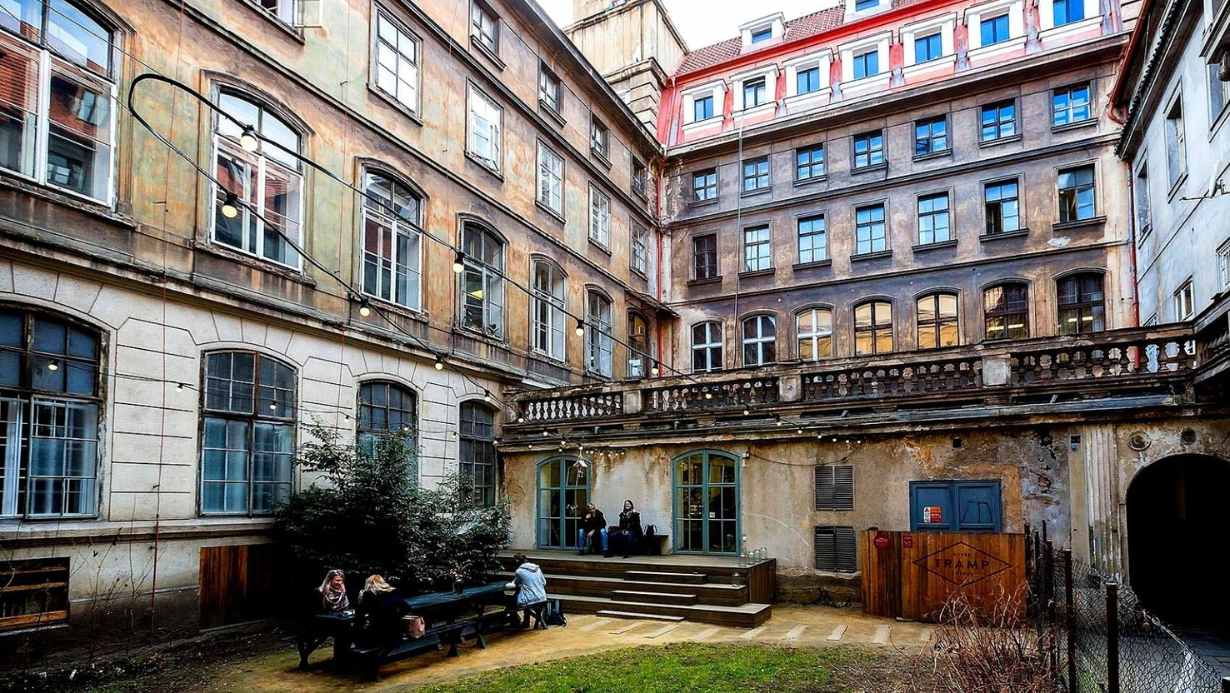
“From 15 August, the actual construction and demolition work on the building at 160/18 Opatovická Street will begin in accordance with the permit,” said Karolína Šnejdarová, a spokesperson for Prague 1.
The passage from Opatovická to Spálená Street through the building’s courtyard is likely to be temporarily closed or restricted.
The investor of the reconstruction is the company Credibilis, which is controlled by Raiffeisen – Leasing.

About Vilímek’s publishing house
The passage connecting Spálená and Opatovická Street was built in the 19th century by Josef Richard Vilímek, who had his publishing house and bookstore in the surrounding buildings. The business gradually gained a great reputation and became one of the most significant in the country.
For example, it was the first to publish a Czech translation of Vinnetou. In the mid-20th century, Vilímek’s company was nationalized and subsequently liquidated, and the buildings were taken over by the central book distribution company.
Since 1996, a section of the building has been occupied by the Higher Vocational School of Journalism. The majestic Neoclassical buildings around are complemented by a front terrace adorned with Doric columns.
At the entrance to Opatovická Street, you can still see the inscription “Nakladatelství Jos. R. Vilímek” on the facade, commemorating the most glorious era of this building.

